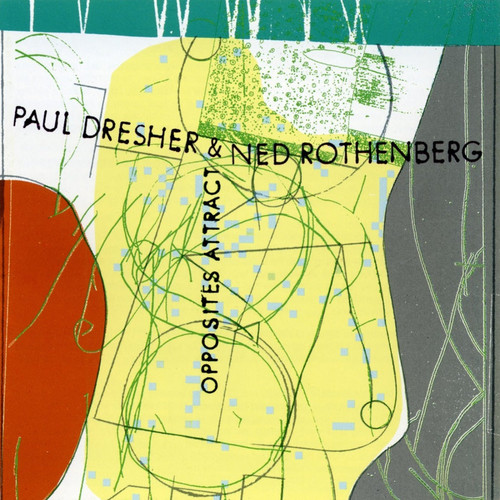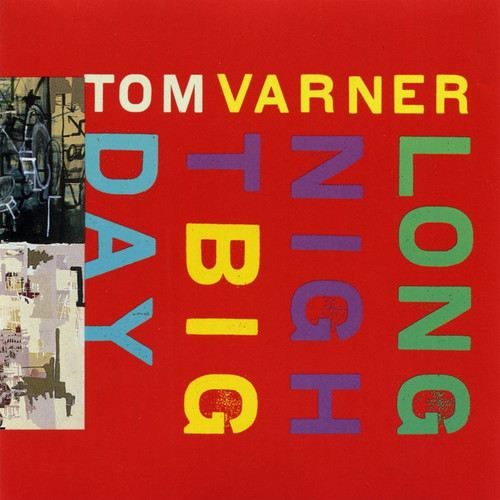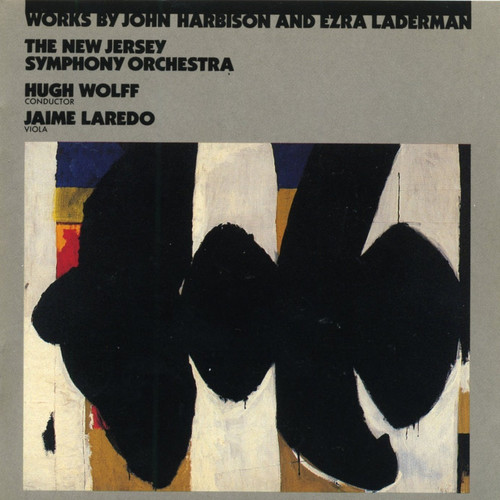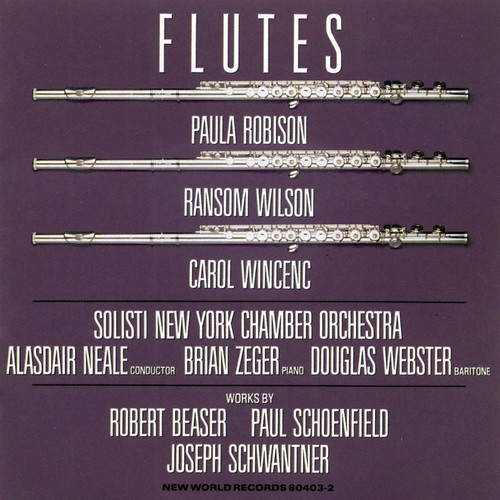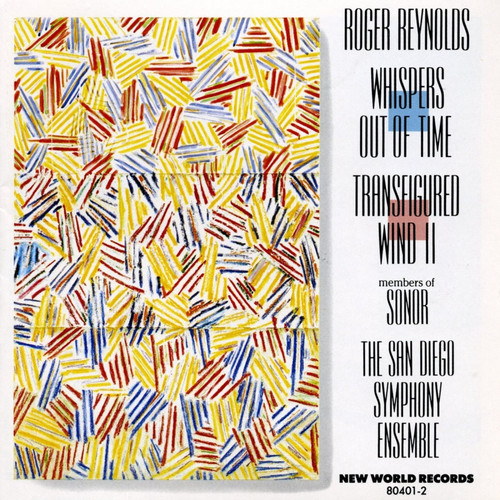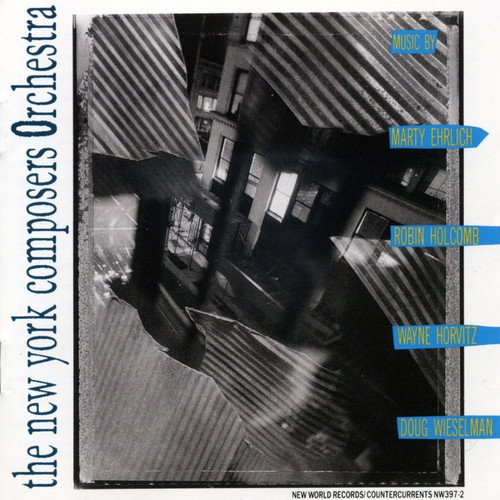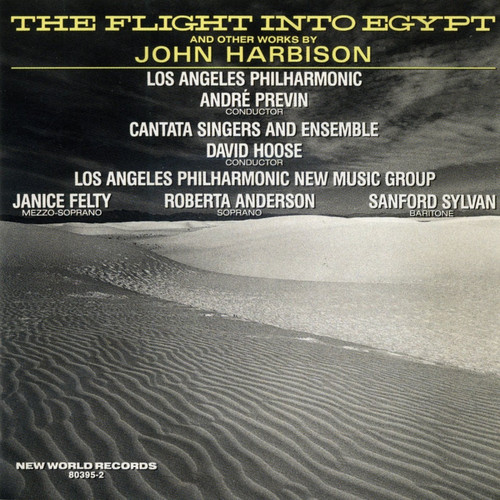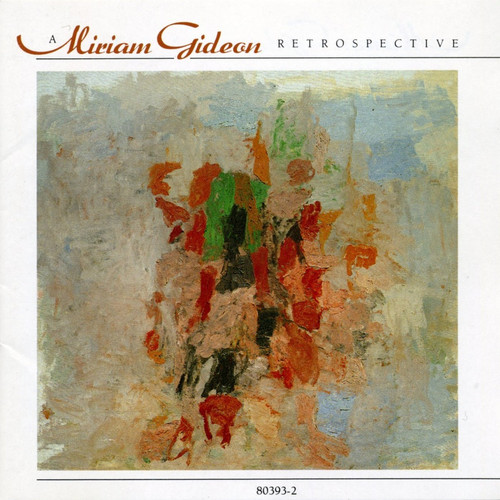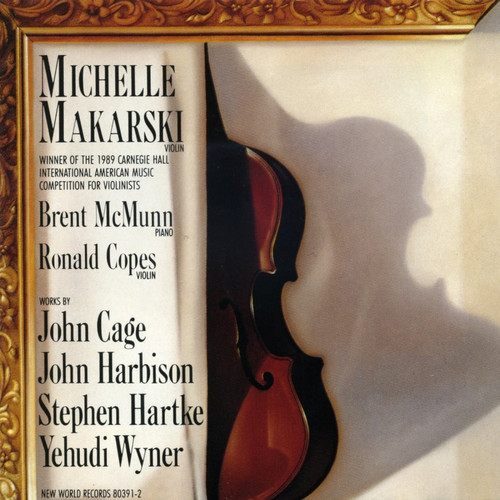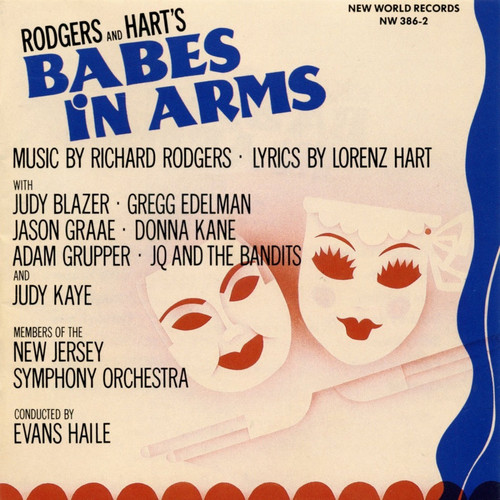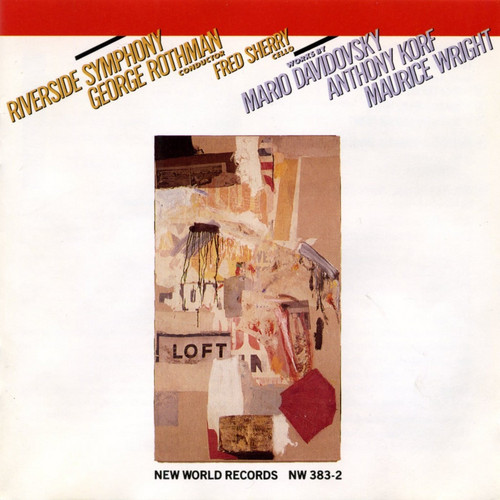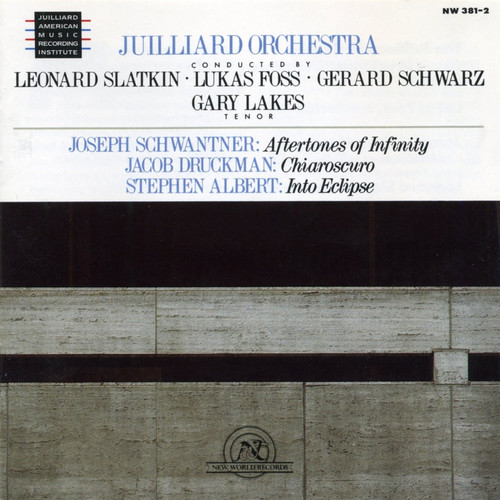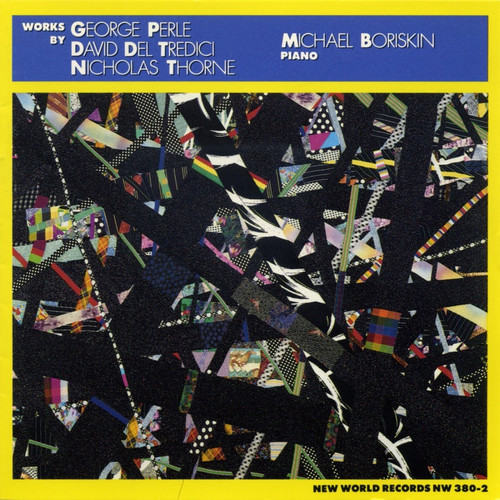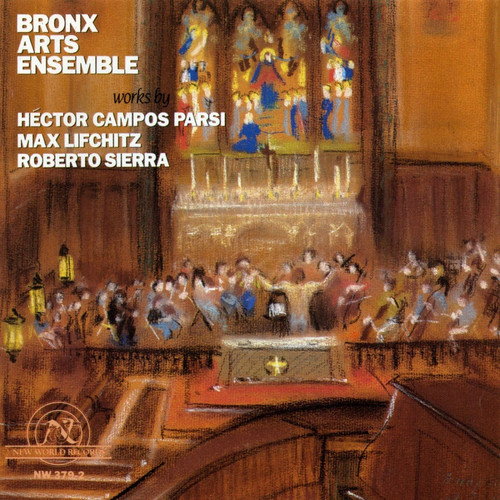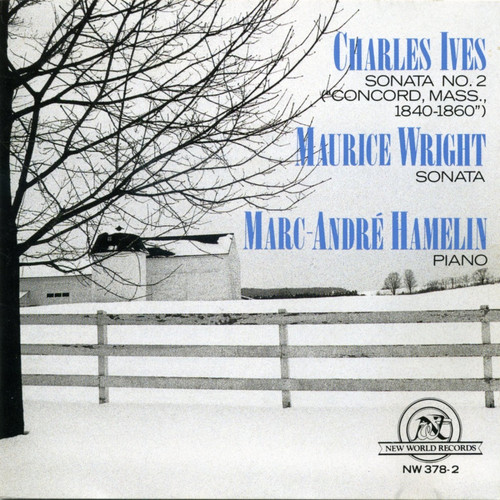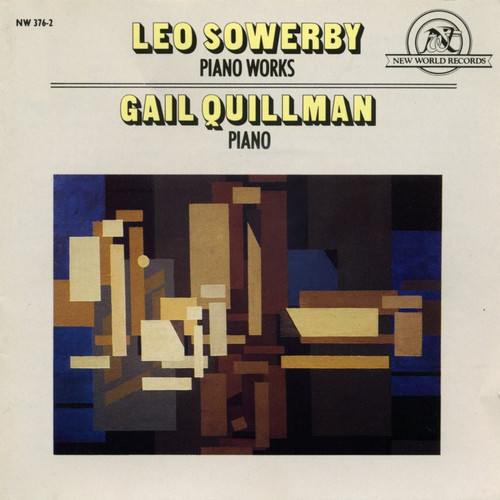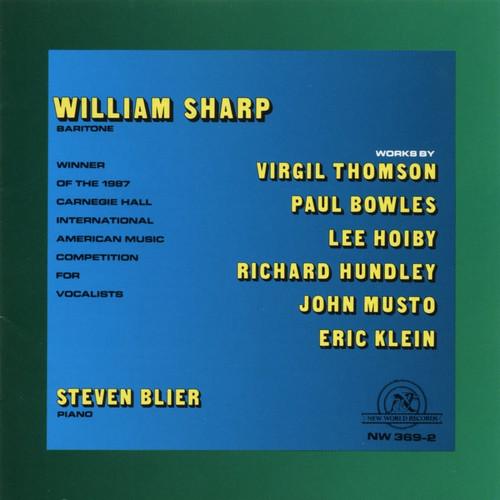★New World Records
Opposites Attract
It is with great satisfaction that we write these notes as the final part of a compositional saga, the evolution of which we could never have foreseen at its inception. This project was unusual for us in many ways, most notably in the length of time (4 1/2 years) during which we worked and reworked the material, and in the number of incarnations that resulted from these efforts. The development of the music was closely linked to a parallel evolution in music technology, particularly in digital s…
Long Night Big Day
When it came time to prepare for this recording, I was intrigued by the possibilities of a quintet consisting of three winds, bass, and drums. My earlier projects had been either in the trio, quartet, or traditional jazz quintet format-now I wanted to write for a group that could play expressive chamber music, swing hard, and improvise on a high level.
As envisioned, the compositions would combine inspiration from numerous sources to create something relevant to the present, reflecting today's c…
H'un (Lacerations) And Other Works
The music of the Chinese-American composer Bright Sheng (b 1955) sometimes floats like delicate fragrances on a breeze and sometimes screams and writhes in actual or remembered agony. This is music, to paraphrase William Blake, of innocence and of experience. The innocence and experience are not simply those of a boy growing up amid the terrors of China's Cultural Revolution—they are also components of a well-trained composer's creative equipment: the beloved folk music of a land left behind and…
Works By John Harbison And Ezra Laderman
Eclectic but distinctively original, John Harbison's Concerto for Viola and Orchestra reflects an artist of deep sensibility and training. Harbison (b 1938) is a recipient of the 1987 Pulitzer Prize and has received commissions from numerous ensembles and foundations. The brittleness sometimes found in Harbison's harmonic language bears the imprint of Roger Sessions, with whom he studied at Princeton; yet the lyricism of Harbison's melodic line is very much his own, a quality strikingly apparent…
Paula Robison, Ransom Wilson, Carol Wincenc, Solisti New York, Alasdair Neale, Brian Zeger, Douglas Webster, Robert Beaser, Paul Schoenfield, Joseph Schwantner
FlutesIn 1986, three composers and three flutists met in a novel commissioning project supported by a National Endowment Consortium Commissioning Grant. Flutists Ransom Wilson, Carol Wincenc, and Paula Robison, each a longtime supporter and performer of new music, asked Joseph Schwantner, Paul Schoenfield, and Robert Beaser to write new works for flute and orchestra. On this recording, each solo artist presents the orchestral work composed for him or her, as well as a flute and piano "encore" by the s…
Works By Irving Fine, Gian Carlo Menotii, Carl Ruggles, Harold Shapero
At the outset of his career, Harold Shapero (b in 1920) was widely recognized as one of his generation's most promising composers. While in his twenties, he undertook to study closely the musical phraseology and rhetoric Haydn, Mozart, and Beethoven, as a discipline to help him sharpen melodic contours and better manipulate larger musical forms. When the brief piano sonata he set out to compose based on classical principles took only a few days to finish, he decided to write two more. Although t…
Whispers Out Of Time / Transfigured Wind II
If composers born in the 1920s deconstructed the classical tradition and destroyed the foundations of "normal" musical practice, it was left to the '30s generation to build a new universe amid the rubble. No one has participated more assiduously in that venture than Roger Reynolds (b. 1934). He has infused into avant-garde music a perspective cognizant of the extra-musical world. It seemed surprising, yet fitting, that in 1989, Reynolds nabbed the usually sedate Pulitzer Prize for music; he was …
The New York Composers Orchestra
The New York Composers Orchestra is a big band formed in 1986 by its artistic directors Wayne Horvitz and Robin Holcomb with the idea of giving new life to a classic format and to further the tradition of new music bridging the worlds of notated and improvised music.
... the music evokes Aaron Copland and Igor Stravinsky as much as Count Basie and Charles Mingus; the playing is not just precise but committed to making the music jump. -The New York Times
The Flight Into Egypt ·The Natural World · Double Brass Concerto
A few years ago a German presenter asked me for my "artistic Credo," which seemed a characteristically European request, but in the spirit of international cooperation I furnished the following: "to make each piece different from the others, to find clear, fresh large designs, to reinvent traditions." Grand and general though it is, the statement seems a good place to begin describing the music on this record.
Sketches for all the pieces preceded their commissions, but the institutions and frie…
A Miriam Gideon Retrospective
There is in American painting a dynamic movement known as abstract expressionism, led by such well-known artists as Jackson Pollack, Franz Kline, and Willem de Kooning.
In Music there is an equivalent--and equally important--development, which we call atonal expressionism. Its lineage stretches from Carl Ruggles and Roger Sessions to Stefan Wolpe and Elliott Carter. The work of Miriam Gideon stands out as a major and individualistic realization of this style.
One of the characteristics of abstra…
Violin Works
Modern music-especially American music, with its tendency to invite various traditions to share the same compositional space-can be a generous art, an art which welcomes inclusivity. Here are works by John Cage (b 1912), Yehudi Wyner (b 1929), John Harbison (b 1938), and Stephen Hartke (b 1952)-four American composers from different generations with different sensibilities, representing very different approaches to writing for the violin. Yet however much these works represent various facets of …
Babes in Arms
This is the first recording of the original score from one of Broadway's gems. “My Funny Valentine”, “The Lady Is A Tramp”, “Johnny One Note”, and “I Wish I Were In Love Again” all came from this show (when was the last time you saw a Broadway show with four hit tunes!), an affectionate and mildly satiric look at a fictional town's adolescent population, abandoned by their parents, who are forced to fend for themselves. More than financial and amorous matters concerned them: These kids wrestled…
Divertimento, Sym No. 2, Night Scenes
Mario Davidovsky was a founding member of the Columbia-Princeton Electronic Music Center. His compositions apply classical compositional form to electronically generated sounds. His Divertimento is rich and subtle, and might even be described as impressionistic.
Maurice Wright’s Night Scenes, although not program music per se, is loosely inspired by nocturnal imagery, from the fantastical turn the imagination takes in the late hours. It is alternately agitated and full of dreamy string harmonic…
Aftertones of Infinity, Chiaroscuro, Into Eclipse
Of the three composers recorded here, it is Jacob Druckman (b 1928) who has changed the most in his approach to composition. After years of involvement with serial techniques, it was in Windows (1972) that he began to readmit elements of the musical past into his work.
The titles of Druckman's works—Incenters, Windows, Aureole, Prism—often display an interest in visual or spatial concepts. In Chiaroscuro, scored for a fairly large orchestra, including electric piano and electric organ, he set o…
Piano Works
The vastly divergent reactions to twelve-tone composition of George Perle, David Del Tredici and Nicholas Thorne are a vivid reflection not only of their different generations, but of the unfolding of musical style change in America. Perle, born in 1915 and educated here at a time when twelve-tone composition was little understood, felt the urge to revise Schoenberg's method so as to reconcile serial chromaticism with the hierarchical elements of tonal practice. The system he evolved, known as “…
Works By Héctor Campos Parsi / Max Lifchitz / Roberto Sierra
Roberto Sierra (b 1953) is thoroughly versed in international composing techniques, yet dedicated to preserving the cultural identity of his Latin American origins. According to Sierra, he has “incorporated elements of folklore and of popular music (urban folklore) in order to create a music that in essence is Puerto Rican, and portrays the marvelous and contradictory world of [that] tropical island.”
Doña Rosita la Soltera (Doña Rosita the Spinster), for soprano and wind quintet, dates from 198…
Sonata No. 2 ( "Concord, Mass., 1840-1860") - Sonata
“This is not a nice sonata for a nice piano player,” wrote Charles Ives about his most famous work, “but something the writer had long been thinking about.”
All four movements were programmatically conceived around figures in the Transcendentalist movement (c. 1936-1860) in Concord, Massachusetts. The “Emerson” movement had begun as a piano concerto, the soloist representing Ralph Waldo Emerson, and the orchestra, the masses listen to him; “Hawthorne” was conceived for “a piano or a dozen pianos…
Piano Works
Leo Sowerby (1895-1968) was one of the great composers who wrote music at the keyboard. Although he is better known for his organ and choral works, his piano music is some of the richest and most original of his output. During the 1920s and early '30s, Sowerby often appeared as piano soloist in his concertos. He had very large, strong hands, and his treatment of the piano is vital, harmonically rich, and quite distinctive. He was a master of counterpoint and created an imposing body of piano wor…
Symphony No. 1 / Overture To "As You Like It"
John Knowles Paine's Symphony No. 1 is a milestone in the development of American music. It was not the first symphony written by an American (George Frederick Bristow, for many years a violinist in the New York Philharmonic, had already written several), but Paine's two essays in the medium are the first that could be received by the musical community here and abroad as works of a composer fully trained to the highest international (i.e., German) standards. Their premieres—The First Symphony in…
William Sharp, Steven Blier, Virgil Thomson, Paul Bowles, Lee Hoiby, Richard Hundley, John Musto, Eric Klein (5)
Works by Thomson, Bowles, Hoiby, Hundley, Musto and KleinAmerican art song has traveled a long way from the parlors of 19th-century America. The turn of this century brought its adolescent rebellion in the iconoclastic hands of Charles Ives, followed by an impressive, if somewhat retrospective, era heralded by such composers as Bacon, Chanler, Nordoff, and early Thomson. But by mid-century, what should have been a time of full adulthood was instead a curiously fallow period (which Philip L. Miller attributes to composers abandoning melody and Ned Rore…
